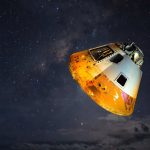This week, we signpost the upcoming ISMPP Academy meeting in Philadelphia, USA, which will feature a presentation by Oxford PharmaGenesis’ own Richard White. We read about Wiley’s approach to integrating AI into its publication practices and about the rise of AI in peer review. We also read about the importance of protecting copyright and intellectual property in the age of generative AI and about the development of tools that can detect AI-generated images in scientific publications. Finally, we dissect guidance on compensation for medical publication activities and explore open science monitoring in the context of the UNESCO Recommendation on Open Science.
To engage with:
ISMPP Academy 2024 via ISMPP
The 2024 International Society for Medical Publication Professionals (ISMPP) Academy meeting is just around the corner! From 13 to 14 November, medical publication professionals will gather in Philadelphia, USA to build their expertise through the exploration of case studies and best practice knowledge sharing. Under the title Pages to practice – case examples and applications, the 2-day meeting promises a packed and engaging agenda. Don’t miss Oxford PharmaGenesis’ own Richard White as he explores The ascent of real-world evidence: building trust through greater transparency with Carrie Lancos (Director, BPM Evidence Publications, Respiratory & Immunology at AstraZeneca).
To read:
Wiley embraces AI via The Scholarly Kitchen | 12-minute read
“We need practical guidelines that ensure researchers, publishers, and institutions reasonably disclose when and how AI [artificial intelligence] tools have been used,” says Josh Jarrett (Senior Vice President, AI Growth at Wiley). In this conversation with Todd Carpenter (Executive Director at the National Information Standards Organization [NISO]), Josh explains Wiley’s approach to AI integration and the role it has to play in scholarly publishing.
The rise of AI in peer review via Nature | 8-minute read
A Stanford University study estimates that AI has been used to substantially modify up to 17% of peer reviews published in computer science conference proceedings since the launch of ChatGPT in late 2022. In this article, author James Zou (Faculty Director of AI for Health at Stanford University) explores the implications of over-reliance on AI in the publications process, and he advocates for the development of “clear guidelines” for reviewers and innovative peer review platforms that support responsible use of AI without compromising scientific integrity.
Toeing the line: copyright and AI via CCC | 7-minute read
How can we ensure responsible use of copyrighted material in the age of generative AI? Generative AI represents a multitude of opportunities for business across all industries. But with this opportunity comes the need to ensure responsible use of copyrighted material and to protect intellectual property rights. In this article, Roanie Levy (Licensing and Legal Advisor at Copyright Clearance Center [CCC]) explores updates to the CCC Annual Copyright Licenses and outlines actionable steps towards compliant AI use.
Identifying AI-generated images via Nature | 8-minute read
AI-generated images can be produced in less than a minute and are notoriously challenging to detect. “This technology can easily be used by people with bad intentions to quickly generate hundreds or thousands of fake images,” explains Elisabeth Bik (Science Integrity Consultant at Harbers Bik LLC). This article explores how integrity specialists, publishers and software developers are creating new tools to detect AI-generated images and safeguard the integrity of the scientific record.
Navigating compensation for medical publications via The MAP | 7-minute read
Understanding the nuances of compensation for medical publication activities can be challenging. In this article, Géraldine Drevon (Director, Head of Publications at GSK), John Gonzalez (Managing Director of Solanum Medical Communications), Siobhan Southam (Director of Delonix Medical Affairs), Veronica Porkess (Publications Lead at UCB), Stephanie Daniels (Independent Medical Publications Professional) and Beryl Gonzalez (Business Development Director at Bioscript Group) dissect guidelines and regulations related to compensation for medical publication activities and offer insights from their own professional experiences.
Open science monitoring: what, why and how via MDPI Blog | 5-minute read
What is open science monitoring, how does it work, and why is it important? This article by Jack McKenna (Communications Associate at MDPI Blog) explores each of these questions in the context of the 2021 United Nations Educational, Scientific and Cultural Organization (UNESCO) Recommendation on Open Science. As part of ongoing efforts to advance open science monitoring, UNESCO is seeking input on its draft Principles for Open Science Monitoring. The consultation is open until 30 November.
Enjoy our content? Read last week’s digest and check out our latest guest blog!
Don’t forget to follow us on Twitter/X and LinkedIn for regular updates!






